The Crazy Shell's Mr. President Coin Game
 |
Marketing BrillianceShell’s Mr. President Coin Game was a fabulous success for Shell Oil Company in 1968 and 1969. A lot of people played and a lot of people won prizes. Perhaps you did, also? In its wake are millions of aluminum president game coins and millions of bronze prize coins. You can buy them on auction sites every day. Also in its wake are collectors who try in vain to assemble a complete set of the original game pieces. In my quest to complete a set I have learned a lot about this promotional game and it can all be found here. Many people have fond memories of playing the game and winning prizes and that, in itself, is a testament to its success. The Mr. President Coin Game inspired a multitude of similar collect-and-win games which continue to this day, like McDonald’s ‘Monopoly’ game. Such games were also a shot in the arm for numismatics because it got people in the habit of identifying and collecting sets of coins. The design and execution of this marketing promotion was nothing short of brilliant and it’s crazy that there is so little information available about it. No one can tell me when the game started, when it ended, how many game pieces were issued, or how many prizes were awarded. No one can tell me if this game was nationwide or only released in certain regions. There are many unanswered questions but there are a lot of clues. |
|||||
Simple and Fun for the Whole FamilyThe game was simple on the surface – just collect coins and win prizes. Whenever you filled up with gas at a Shell station1 you received a paper packet which contained one of 39 different aluminum president coins. You then placed your coin in the matching space provided on the official game card. The game card was divided into sections and if you could get all the president coins in any one of the sections, you won the prize indicated for that section. Prizes ranged from $1 to $5,000 (that’s about $30,000 in today’s dollars!) and you could also win a beautiful bronze set of presidential medals that came with a mounting board. This is the prize most remembered as over a million of these bronze presidential sets were given away2. There were also ‘instant winner’ coins that won a prize without having to collect any additional coins. I remember the excitement of opening up a game piece and seeing SHELL'S INSTANT WINNER on the back. The game coins were often given to kids to play with and they were educational to boot. How fun! |
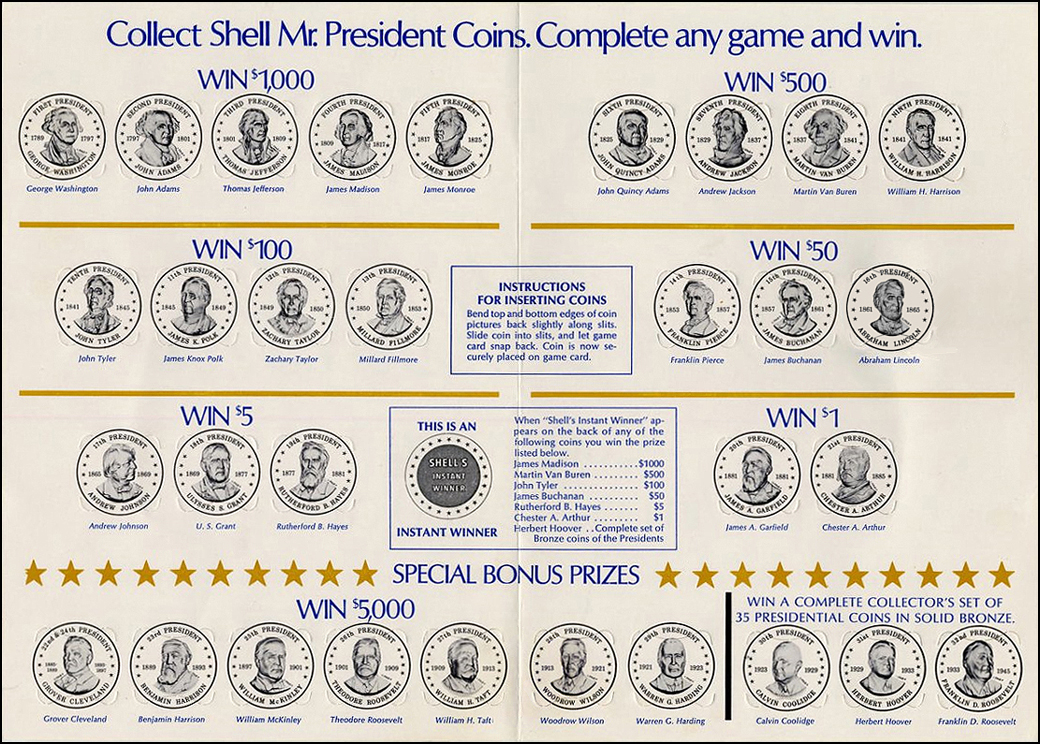 |
|
Above is the common version of the game card onto which you placed your game coins. If you filled any of the game sections you won the indicated prize. These game cards were given away at Shell stations and they were also inserted as a supplement in selected newspapers as part of Shell Oil's marketing blitz. Click here to see a scarce version of the game card. |
 |
|
If your president coin had INSTANT WINNER |
 |
|
Newspaper ad in The Southeast Missourian on |
Game On
Sometime in March, 1968, the game started but only in selected regions. When released in a region, it ran for three to five months then ended. It wasn't released in California until August, 1968. Some regions did not start the game until the middle of 1969 and some regions never saw the game. Where released, people played and won prizes right away. In April, 1968, Shell Oil began running newspaper ads announcing prize winners. A lot of ad space was purchased to promote the game and Shell also came up with a musical jingle that was used in the advertising.Shell Changes the Game Rules … Three Times
At the beginning of the promotion the prize for completing section one was $2,500. In July, 1968, the prize was reduced to $1,000 and stayed that way for the remainder of the game.Also at the beginning, game cards had the word "FREE" printed over six of the presidents. This meant that a prize could be won without collecting the specified free coins. These "FREE" spots were eliminated in July, 1968. Players then had to collect all the presidents in a game card section in order to win.
The game continued in some regions until December 4, 1969. By then over a million prizes had been awarded. As the game progressed Shell did things to keep players’ interests up. As early as April, 1969, Shell began running newspaper ads proclaiming how many prizes had been won and how many prizes were still remaining “in your area.” Then in October, 1969, Shell ran ads announcing a major change in the game rules – you no longer needed to collect all the presidents in a game card section to win a prize! The new rules stated that you only needed to get one specific president in any section on the game card and you automatically won the prize for that section. This sounded great on the surface, and had marketing punch, but it was meaningless to anyone who had been playing the game. The specific presidents Shell said you needed to get was, of course, the key coins which players had been trying to get all along. Every seasoned player already knew that if you got a key president coin you were a winner.
 |
|
Newspaper ad in The Indianapolis Recorder |
Scandal Strikes the Mr. President Coin Game!
On November 12, 1968, Shell Oil recalled the game pieces from all service stations, temporarily halting the game while new, tamper-proof game piece packaging could be prepared. Word got out that Shell station dealers were cheating and cashing in the prize coins themselves. With the first version of packaging, some people figured out how to tell which coin was in the package without opening it. This fueled the ongoing legal debate concerning these types of games. Read the original article here.
Shell quickly replenished service stations with the new (version two) coin packaging and the game went on. What did Shell Oil do with all the game pieces that were recalled? No one can tell me. Assuming large quantities of prize-winning coins were included with the recall, the game odds (and quantity of outstanding winning coins) would not be known without opening each one. Because it would have been more expensive to open and repackage them all than make new ones, I suspect they were simply destroyed and replaced with new ones.
|
 |
 |
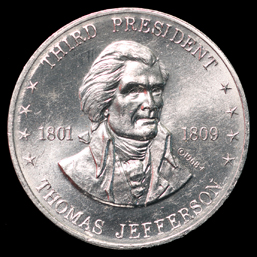 |
 |

| 
| 
|  |

| 
| 
|  |

| 
| 
|  |

| 
| 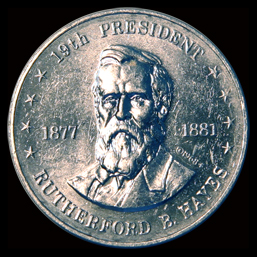
|  |

| 
| 
|  |

| 
| 
|  |

| 
| 
|  |
| The thirty-one presidents above were all issued with the common reverse design. Seven of these presidents (Madison, Van Buren, Tyler, Buchanan, Hayes, Arthur and Hoover) were also issued with the INSTANT WINNER reverse design. In addition, Shell issued a gold-tinted aluminum $1.00 instant winner coin for a total of thirty-nine game pieces in a complete set.Collecting a Set of Original Game CoinsDo you want to collect a set of the original aluminum game coins? Good luck! Of the thirty-nine different medallions, twenty-three are common and easy to find. They were given away by the tens of millions. The remaining sixteen are ‘key’ coins that were, effectively, prize winners. Of course the key coins – especially the top prize coins - were issued in small quantities. I can’t find a record of the quantity of each of the key coins that were issued but my research indicates the following: | |||||||||||||||||||||||||||||
| ||||||||||||||||||||||||||||||
| I estimate that over 130 million game coins were issued which would put the odds of winning any prize at about 1:60, and the odds of winning the top prize at about 1:1,733,000. As I watch Shell’s Mr. President Coin Game coins come up for sale on auction sites, the ratio of common coins to prize-winning ‘key’ coins is about 1:2000. This indicates that perhaps 97% of all the key coins were redeemed during the game and may never be seen again. It also indicates that there could still be over 65,000 key coins outstanding. Using this math it can be estimated that the following quantities of key coins remain outstanding: | ||||||||||||||||||||||||||||||
|
| There is a very interesting phenomenon concerning the availability of the key coins. For the Chester A. Arthur and Herbert Hoover coins, the frequency which they are seen fairly corresponds to the population estimates shown above. But for the key coins with prize levels $5.00 and above, the availability does not correspond. For example, I think that if there truly were 1,680 Rutherford B. Hayes tokens remaining, they would be seen occasionally at coin and token shows, on auction sites, or at least mentioned on token collecting websites. On the contrary, I have only seen three Rutherford B. Hayes tokens in all my years of searching, collaborating with other collectors, and watching auction sites. I have studied this phenomenon for years and below are my thoughts on the subject. The official reports that circulated during the game claimed that The Franklin Mint randomly inserted the key coins into boxes as they shipped them out. I do not believe this is true. I have records of congressional testimony made by multiple gas station owners stating the opposite and giving specific examples. Testimony revealed many instances of prize-winning game pieces being intentionally 'planted' by oil company representatives (multiple oil companies) at gas stations of their choice. Gas station owners reported - under oath - that they were handed game pieces and told they were winning game pieces. They were instructed to give them to their customers of choice. This is strong evidence that oil company executives intentionally controlled how the key coins were distributed. Gas station owners reported that they would hand the winning game pieces to their customers of choice, and encourage them to open the game piece on the spot. This helped ensure that the customer received their prize, and the oil company (and gas station) received the positive PR resulting from it. Naturally, this could have also resulted in gas station owners finding ways to profit themselves; by giving the winning game pieces to friends and family to redeem. But, more importantly, these clandestine actions have implications for the existence of high-prize winning game pieces. Consider this. There are many game pieces still in their original packaging today. Common sense says that if they were all opened, at least a few of the high-prize-winning pieces would be found. But if none of the high-prize game pieces were included in the usual distribution during the game, but instead intentionally planted at gas stations, no high-prize game pieces may be hiding in unopened packages. And no high-prize game pieces may exist at all if they were all hand-delivered to gas station owners. I cannot confirm that planting of key game pieces occurred in every game but testimony reveals that this was a common practice in the late 1960s. Of course, each game may have had a different threshold for the maximum prize-level that was allowed to be distributed at random. It is well-documented that in Humble Oil's 'Tigerino' game (1966) all prize-winning game pieces with a value between $3.20 and $1,000.00 were hand-delivered to gas stations. Only low-value prize cards were included in the bulk boxes shipped to gas stations. Personally, I have found winning game pieces by opening original game pieces (thousands of them), but none that yield a prize over $10.00. Some people have speculated that all the high-prize key coins in the Mr. President Coin Game were redeemed during the game and destroyed by Shell Oil. That's an easy conclusion considering the sheer absence of the coins and, based on the discussion above, may be true. About 3,000 prize-winning coins (with prizes of $100 or more) were issued in the game. I do not believe they were all redeemed. Finding one would answer the question but I have not been able to find one - nor have I heard of anyone possessing one. I have not found any documentation describing when or how oil companies destroyed the winning game pieces once they were redeemed by customers, but I do know that they were not all successfully destroyed. Some Mr. President coins were 'cancelled' by punching a hole in them. Some of these cancelled coins have been found by collectors. I personally have several dozen winning game pieces which were redeemed by customers for payment, but not destroyed by the oil company. My conclusion is that if high-prize-winning game pieces exist, they exist in very low quantities. They would have had to somehow escape the oil companies' intentional efforts to get them redeemed during the game. Make it to Market?I think there are many key Mr. President coins sitting around in people's attics. The question is if they will ever make it to market. Most 1909-S VDB pennies have made it to market at one point or another. That's because when someone finds one in a box in the attic, they usually recognize it as a potentially valuable coin. Not so with Mr. President coins. I suspect many valuable Mr. President key coins go straight from the attic to the trash can. There should be thousands of key coins in existence and this partially explains why they are seldom seen.
|
The PrizesYou could only win two things in Shell’s Mr. President Coin Game; cash or a set of presidential medals struck in bronze. Cash prizes were $1, $5, $50, $100, $500, $1,000, $2,500 and $5,000. The $2,500 prize was only available regionally at the beginning of the game (see game cards here). Of course, the game pieces themselves were like little prizes you received just for stopping in.The bronze medal set called 'Presidential Hall of Fame' was won by collecting three president coins ... Coolidge, Hoover and F. D. R. (with Hoover being the key) ... or receiving the President Hoover INSTANT WINNER coin. The prize came in a large envelope with the medals, a cardboard display to mount the medals, a small informational booklet, and a registration card that could be mailed back to The Franklin Mint. There were five versions of this prize and you can see them all here. The Franklin Mint produced 1,377,324 'Presidential Hall of Fame' sets in bronze but not all of them were for the Mr. President Coin Game promotion. They were also given as a prize in Shell’s 1968 ‘Famous Facts & Faces’ coin game (which ran concurrently with the Mr. President Coin Game) and they were also sold separately by The Franklin Mint. I cannot find any record of the number of bronze presidential sets given away in the Mr. President Coin Game but I would estimate it was in excess of 600,000. The medals were nicely struck but the display board was of poor quality. It was made of cardboard and often creased under the weight of the bronze medals. The die-cutting of the holes was sometimes off-center which cut into the printed lettering. Nice sets in their original packaging are available every day on popular auction sites. |
The Franklin Mint Creates a RarityThe Franklin Mint began in 1964 producing commemorative medals and coining legal tender for foreign countries. In 1965 they landed contracts with casinos in Las Vegas (and elsewhere) to supply large quantities of gambling tokens, and by 1966 they were producing gambling tokens for over 70 casinos. In 1967 The Franklin Mint began creating and selling beautiful sets of presidential medals based on the designs of sculptor Harold Faulker. The medals were struck in sterling silver, platinum, and bronze (in four different diameters) and sold in sets.As evidenced by the sales piece below, The Franklin Mint was attempting to attract large corporate customers in early 1968 by offering to mint the presidential sets in volume for marketing purposes. They hit the jackpot with Shell Oil Company. In the sales piece, The Franklin Mint stapled a sample of what a mass-produced coin might look like. It is an Andrew Jackson medal, 26mm in diameter and struck in aluminum. I presume one of these sales samples was shown to Shell Oil. This basic design ended up being mass-produced in bronze for one of the prizes in the Mr. President Coin Game. | ||
| This specific medal design, with the Franklin Mint hallmark above Jackson's left shoulder, was never mass-produced or sold in aluminum. It was only minted in small quantities for the sales piece. Only three aluminum prototypes are known to exist; one of Andrew Jackson (pictured above), one of George Washington and one of John Quincy Adams. All three are currently in my personal collection. |
 |
 |
 |
 |
| |
Franklin Mint Bombs the ProductionThe Franklin Mint coined the aluminum game pieces and also the attractive ‘Presidential Hall of Fame’ bronze medal set which was one of the prizes in the game. Whereas The Franklin Mint produced beautiful, high-quality coins, tokens and medals up to this point, they bombed the production of the aluminum game coins. Many were weakly struck with some of the lettering and design elements weak or nearly missing. As the dies became worn and flawed from use, The Franklin Mint continued to repair and use them to strike the medallions. Die flaws can be seen on many of the coins.In the normal course of production, the planchets were punched from aluminum sheets that had a brushed surface. When the planchets were struck between the dies this brushed surface became smooth and gave the coins their shiny surface. If the planchet was weakly struck, as many were, the original brushed planchet surface did not smooth out and the lettering did not fully punch up. This makes the finished coin appear to have post-strike scraping damage in some areas. I've seen this condition on many coins right out of their original packaging. Granted, these were mass-produced, inexpensive, throw-away game pieces but I would expect better from The Franklin Mint - especially considering the striking pressures did not need to be high for aluminum. |
 |  |
| At first glance this appears to be scraping damage after entering circulation but it is actually caused by a weak strike. The original brushed surface of the planchet is visible (it looks like scraping) and the metal did not flow into the lettering of the dies in some areas. Weak strikes plagued the entire production run. This Millard Fillmore medallion is uncirculated and undamaged. | The die that struck this Grover Cleveland coin was welded and ground in two places. The surface of the die was left quite rough and the copyright date became obliterated. |
One Font, Many AppearancesOnly one font was used for the lettering on all the president dies but the font appears to be different on certain presidents. This is because the depth of the impression during the hubbing process was inconsistent. If a die received a shallow impression from the hub the lettering was thinner and the ornate details of the font were more pronounced. Dies with deeper impressions show thicker lettering and less of the ornate font details.It is not known how many dies were produced for each president but the hubbing depth is consistent and the appearance of the font and design elements for each president was consistent. Some medallions were struck with dies that had a smaller outer diameter. These medallions have a slightly wider rim, and lettering that appears closer to the rim. These may have been struck with new dies that were prepared differently, or old dies that had the outer diameter machined down. |
 |
 | |
These two medallions have the same font. The George Washington medallion (top) shows ornate details of the font while the Calvin Coolidge medallion (bottom) does not. The font details became less pronounced when the dies were hubbed deeper. |
Concentric lines from the reverse die can be seen on the obverse of this John Quincy Adams medallion. The obverse die became damaged when it clashed against the reverse die without a planchet in place. |
Instant Winner Hall of FameClick here to see sixty-six Instant Winner game pieces from various gas station games. Some are quite rare. |
The Collect-And-Win CrazeOil companies had been using games and incentives to attract people to their gas stations for decades but the Collect-And-Win format was wildly successful, especially when it included 'Instant Winner' game pieces. From 1965 to 1970 over sixty Collect-And-Win games were launched by oil companies. Billions of game pieces were distributed to consumers and many millions worth of prizes were awarded. Standard Oil offered over 1,000 brand new Ford Mustangs in their All-Pro and Super Pro games. (The top prize in Shell's Mr. President Coin Game was worth more than a new Mustang.) Some games were only released locally, some regionally, and some were nationwide. These promotions increased sales and created fierce competition. One gas station owner described the games as "a necessary annoyance." Shell's Mr. President Coin Game wasn't released in all areas of the country but it was the most popular and most widely played. This is evident by the huge quantity of game pieces and game prizes extant. The list below only shows oil company games that used the Collect-And-Win format with which you could actually win a valuable prize. Additional promotions where 'collectible' game pieces were given away, with no prizes offered, are not listed. |
 |
 |
 |
 |
 |
 |
 |
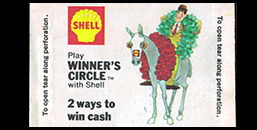 |
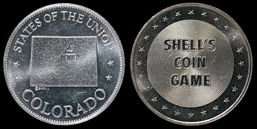 |
 |
 |
 |
 |
 |
 |
 |
 |
 |
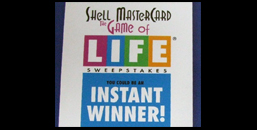 |
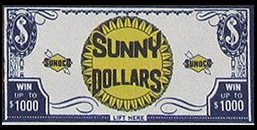 |
 |
 |
 |
 |
 |
 |
 |
 |
 |
 |
 |
 |
 |
 |
 |
 |
 |
 |
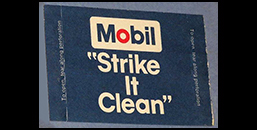 |
 |
 |
 |
 |
 |
 |
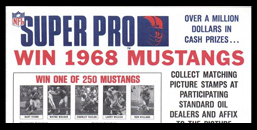 |
 |
 |
 |
 |
 |
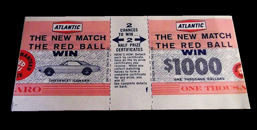 |
 |
 |
 |
 |
 |
 |
 |
 |
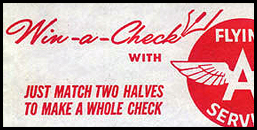 |
 |
 |
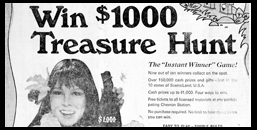 |
 |
 |
 |
 |
 |
 |
 |
 |
 |
 |
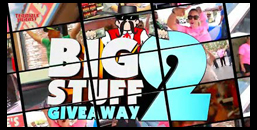 |
 |
 |
 |
 |
 |
 |
 |
 |
 |
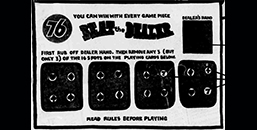 |
 |
 |
 |
 |
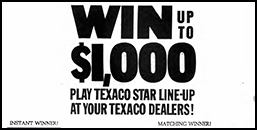 |
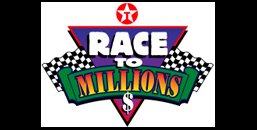 |
 |
 |
 |
 |
 |
 |
 |
 |
 |
 |
 |
 |
 |
 |
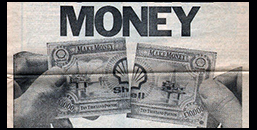 |
 |
 |
 |
 |
 |
 |
 |
 |
 |
 |
 |
 |
 |
 |
 |
 |
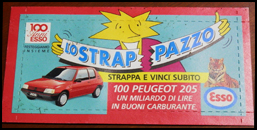 |
 |
 |
 |
 |
 |
 |
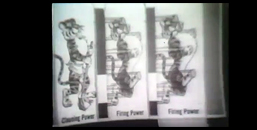 |
 |
 |
 |
 |
 |
 |
 |
 |
 |
 |
 |
|||
Prize-Winning PromotionsSince day one, oil companies have offered prizes and premiums to inspire consumers to fill up at their gas stations. The first modern gas station - a Gulf station in Pittsburg, PA - opened on December 1, 1913 and they gave away road maps on the first day. These promotions attempt to gain an edge over the competition and build customer loyalty. Gas station promotions take many different forms but they all fall into four main categories: 1) Play Our Game and Win a Prize. There are four types of prize games. The most successful prize games are the first type. They have two important goals and two game elements to achieve them. The first goal is to get consumers to switch from their current, favorite gas station just once. To accomplish this, the games have an 'instant winner' element so the player has a chance to win a prize on their first visit. The second goal is to get the consumer to come back over and over. This is accomplished with the collect-and-win element. Players accumulate game pieces, one per visit, in hopes of completing a set and winning a prize. Shell's 'Mr. President Coin Game' (1968) is the best example of this type. The second type - games that lack an 'instant winner' element - are less effective because players have to visit the gas station over and over before they have any chance of winning anything. Shell's 'Americana' game (1965) is one example. The third type is remarkably successful even though there are no prizes for collecting the game pieces. These games rely primarily on the 'instant winner' element. When you get your game piece, either you're an instant prize winner or you go away empty-handed. However, if the game pieces are interesting, and there is a good chance of completing a set, you may be inspired to come back over and over just for the satisfaction of completing your set (and maybe getting an instant winner game piece in the process). Sunoco's 'Antique Car Coin' (1969) and Shell's 'Presidential Coin Game' (1992) promotions are two very successful examples of this type. Coin and stamp collecting was popular in the 1960s and 1970s and these games capitalized on the collecting mindset of consumers. The problem is that the odds of winning anything in these games is usually about 1-in-60. The fourth type (instant winners with nothing to collect) are usually scratch-card promotions. Players receive a scratch card at the gas station and some are prize-winning cards. These promotions do not qualify as 'games' in the traditional sense, but neither do the promotions in Type C. Legally, all four types are regarded as 'games of chance' because there is no skill involved in any of them. They are just marketing campaigns of the oil companies, and the prizes come out of the marketing budget. Examples of those four prize game types are illustrated above. 2) Win a Prize in Our Sweepstakes. There are two types of sweepstakes promotions. Type A) Collect sweepstakes tickets. With every visit the customer receives a pre-numbered sweepstakes ticket. The customer then needs to come back to the station when the winning numbers are posted to see if they have won a prize. Humble Oil's 'Lucky Tiger Money' promotion (1966) is one example of this type. Type B) Fill out our sweepstakes form. Traditionally, the forms were to be dropped off at the gas station (or mailed in) and winners were notified after a drawing was held. In recent years, online registration has become the norm - sometimes with a code obtained at time of purchase - and pre-selected winning codes are identified immediately. Examples of sweepstakes promotions are listed below. |
 |  |
 |  |
 |  |
 |  |
 |  |
 |  |
3) Stop in and we'll give you a free gift.
These 'premium' promotions are the earliest type of promotion and continue to this day. The effectiveness, of course, depends on the desirability of the gift. There have been multitudes of these advertising promotions over the years and I don't dare try to compile a list.
Collectible premiums that are part of a set continue to be the most popular; sports cards and sports coins are especially popular. These promotions rely on the psychology of 'the thrill of the chase,' where it is very natural to want to return to the gas station over and over to try to complete the set, even if the completed set is nearly worthless.
4) Collect our loyalty stamps, then trade them in for a prize or discount.
Loyalty stamps ... also known as savings stamps ... were used in gas station promotions as early as the 1930s. With each purchase, stamps were given to customers along with a savings booklet to stick them in. When the booklet (or a portion of it) was filled, the stamps could be redeemed for something of value at the gas station; usually a discount on a purchase. There have been many variations on this theme but they are all designed to build loyalty and reward the customer for multiple purchases.
In 1936 a special type of savings booklet was produced by Liberty Sales System, Inc. and sold to oil companies for their promotions. These booklets were custom printed with the name of the service station (and their products) in them. The booklets, when filled with the gas station's stamps ... either physical stamps or rubber stamp imprints ... could be redeemed for a mystery prize of cash, merchandise, or services. The front of the booklets promenently showed the cash prizes - up to $20.00 - which was a lot for a loyalty reward back then. The amount of the prize was hidden in the cover of the booklet under a riveted panel which was not to be broken until redeemed. Several oil companies used the Liberty booklets in the 1930s and 1940s.
The Liberty savings booklets were well-designed and introduced clever marketing elements that would become commonplace in oil company promotions:
- They teased the customer with the chance for a substantial prize.
- It was necessary to return to the gas station over and over to have a chance to win.
- The prize was concealed in the book and had to be revealed. This had the element of anticipation and surprise - like a scratch-off card.
- Some booklets contained larger prizes than others - a game of chance.
- The booklets, which were filled with the oil company's advertising, were designed to be endeared and opened multiple times during the promotion.
 |
|
A 1954 Cadillac up for grabs in a sweepstakes. I do not know what promotion this was, but the Sohio Standard Station in the background is a clue. |
| Production Note: The same "INSTANT WINNER" reverse design that was used for the key medallions in Shell's Mr. President Coin Game was also used for Shell's Famous Facts & Faces game, and the first version of Shell's States of the Union game. The Franklin Mint used the exact same dies that they used to strike the Mr. President medallions. The dies were well worn after striking all the Mr. President keys and the wear is obvious on many medallions from these two other games. |
|














